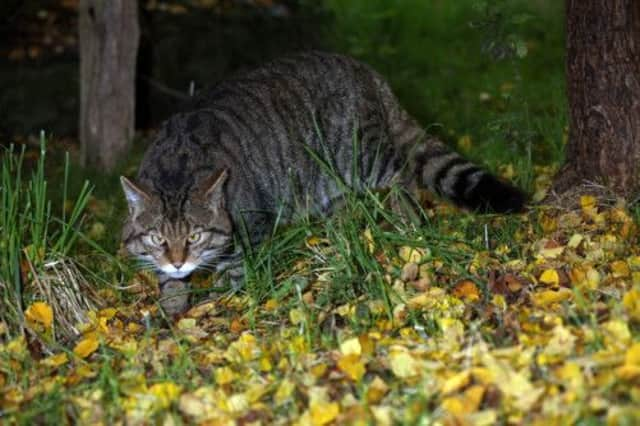Race against time to save the wildcat


The silence was shattered by what sounded like a gunshot. At the tender age of 16, I had just met my first wildcat. Had it been in the wild, I might have run a mile at the loudest spitting sound I had ever heard, but I was fascinated by how different a wildcat is compared with a friendly moggie. Not only to look at, but also how it behaved.
I was reminded of this many years later when I met some orphaned wildcat kittens being hand-reared. Totally silent, they ignored humans, freezing on the spot at my slightest movement and looking through me as if I were not there. While we might think that domestic cats are just domesticated versions of the wildcat, they have a distinct evolutionary history of more than 170,000 years. Unfortunately for the native wildcat, this history is not long enough to prevent the two from hybridising, so that Scottish wildcats are threatened with extinction by genetic pollution from domestic cats.
Advertisement
Hide AdAdvertisement
Hide AdWildcats were already in Yorkshire more than 9,000 years ago and long before the Iron Age when the first domestic cats made it to our shores. At this time, it was very much the British wildcat – it was only much later that it became exclusively Scottish. As forests were converted to agricultural land and people exploited wild animals for utility or sport, or to prevent conflict, many predators, including bears, wolves and lynxes, declined as they ran out of space to live and prey to live on. Conflict with people grew as native predators turned to domestic livestock for food and as persecution increased so they began to disappear. By the beginning of the 20th century the wildcat was on the brink of extinction.
Woodland habitat
Following the establishment of the Forestry Commission in 1919, which led to much-needed woodland habitat being restored to an almost treeless Scotland, the wildcat had a second chance and seemed to spread far and wide over the next 30 years. However, unnoticed by us, the wildcat was fraternising with feral domestic cats, resulting in fully fertile hybrids. Perhaps as the wildcat population recovered and males dispersed further than females in the search for new home ranges, they found themselves in areas with no female wildcats and instead turned to the local attractions. By the 1950s it was getting harder and harder to find a wildcat that did not bear signs of mixed ancestry on its fur coat.
Almost too late, the wildcat only received full legal protection in 1985, but it has been difficult sometimes to enforce the law as it can be tricky to distinguish wildcats from hybrids and domestic cats. National Museums Scotland is collaborating with Chester University to develop a genetic test based on tiny differences, called SNPs (single nucleotide polymorphisms), between the DNA of wildcats and domestic cats.
We are now close to having a full set of tools to identify wildcats, and are exploring means by which to conserve them. Estimates of how many Scottish wildcats are left vary. Some think there are a few thousand, others only 400, but one recent estimate stated that there may only be 35 left. What is clear is that the wildcat is critically endangered. Given its precarious status, Scottish Natural Heritage established the Scottish Wildcat Conservation Action Plan Steering Group. Bringing together expertise from across the natural heritage sector, the group has just published a comprehensive Conservation Action Plan.
Where the wildcats are
The plan aims to halt the wildcat’s decline in the next six years and will involve a variety of direct conservation actions as well as further research. First we need to find out where the wildcats are. This will be done by combining camera trapping and genetic testing so that we can focus conservation effort effectively. We need to know much more about the process of hybridisation and how we can minimise it, which will require further research. In the meantime, feral cats and obvious hybrids will be trapped, neutered and released, so that they can no longer spread their genes to wildcats.
Plans are also being made for captive breeding which will provide an insurance policy in case hybridisation effectively wipes out the wildcat. This will mean taking animals from the wild, but this should not be seen as negative. When the critically endangered Iberian lynx was down to only 125 animals, taking single cubs from litters of three established a highly successful captive population which is now returning animals to the wild after only a few years. Another important aspect of the Conservation Action Plan is to get wider public support through greater awareness of the wildcat’s plight and encouraging responsible domestic cat ownership, such as neutering and vaccination against common viral diseases.
Are we too late to save the wildcat? Recent photographs from camera traps suggest good-looking wildcats are still out there, but we probably do not have much time. The Scottish Wildcat Conservation Action Plan offers the wildcat the best chance for a viable future and National Museums Scotland intends to play its part in halting its decline. Scotland without its iconic wildcat would be unthinkable.
• Dr Andrew Kitchener is principal curator of vertebrate biology, National Museums Scotland
SEE ALSO